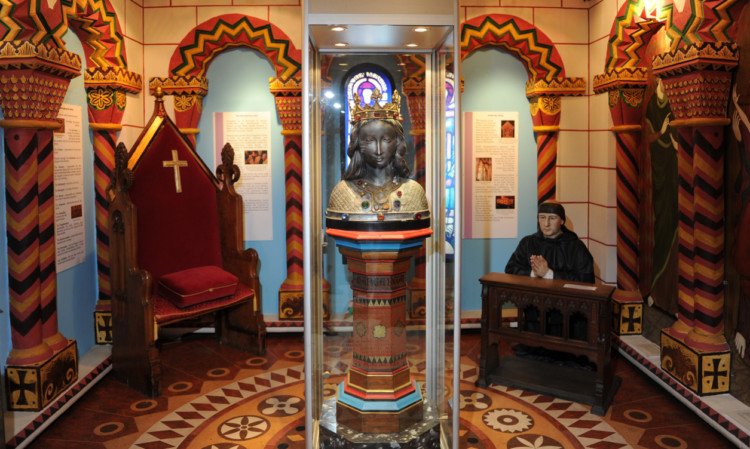Abbot House has again sought to allay fears over its plans to display human remains.
Last week Dunfermline Heritage Trust former honorary past president Sheila Pitcairn branded the proposal as immoral.
However, Fife Council archaeologist Douglas Speirs said the exhibition Voice from the Past: Life and Death in Medieval Dunfermline, featuring the display of skeletons unearthed in the grounds of the heritage centre more than 20 years ago would be carried out in a thoughtful, ethical and professional manner.
Local guide Jack Pryde has now questioned the suitability of the room in which they will be put on display, which has housed a replica of the head shrine of St Margaret since the centre opened.
The brightly decorated walls, reflecting what the 12th century Dunfermline Abbey may have looked like, would, he said, in part be repainted in grey and the head moved.
But Abbot House director Dr Devon McHugh said the room had been carefully chosen with the ethics of the care and display of human remains in mind.
While she sympathised with Mr Pryde’s sadness that the display would be altered, she said Abbot House was an active heritage centre progressing towards accreditation as a museum and so its displays were not static.
“As Doug Speirs has commented previously, archaeology is the study of people in the past our aim in presenting these skeletons is to help both local people and visitors to explore their past in an active and engaging way. In order to do this, Abbot House will regularly change and update our exhibitions and displays to present a range of stories about our past, and to continue to attract visitors to explore the history of the house,” she said.
However, Mr Pryde “sincerely and respectfully” asked the management to rethink its plans.
He said: “It is a truly iconic room telling the story of Scotland’s only female saint, who lived in Dunfermline as queen along with her husband, King Malcolm Canmore.
“She is internationally known, revered and respected. Margaret played an instrumental role in fashioning King Malcolm’s kingdom.
“When visitors come to Dunfermline, the St Margaret Room is high on the ‘must see’ list, as is her shrine and cave. I wonder if the skeletons’ identity is known in Dunfermline, let alone internationally? I would suggest the answer is a definite no.”
However, Dr McHugh said the room was ideal for the display.
“The skeletons will be displayed on an east-west axis, reflecting the burial traditions of Scottish medieval Christians.
“The decorative features of this room are also particularly well suited to this exhibition, and to presenting the remains in a reflective and scholarly atmosphere.”
She said since 1995 the window had been screened with a replica stained glass panel depicting Mary Magdalene, which helped keep light levels consistent and low.
Conservation cases will also protect the remains from UV light and from fluctuations in temperature and humidity.
“Most importantly, as the room is located at the far end of the first floor, it is not required for any visitor to walk through the display in order to see any other exhibitions this allows our visitors to make the active choice to view the displayed remains,” she added.
The head shrine has already been moved and remains on display.
